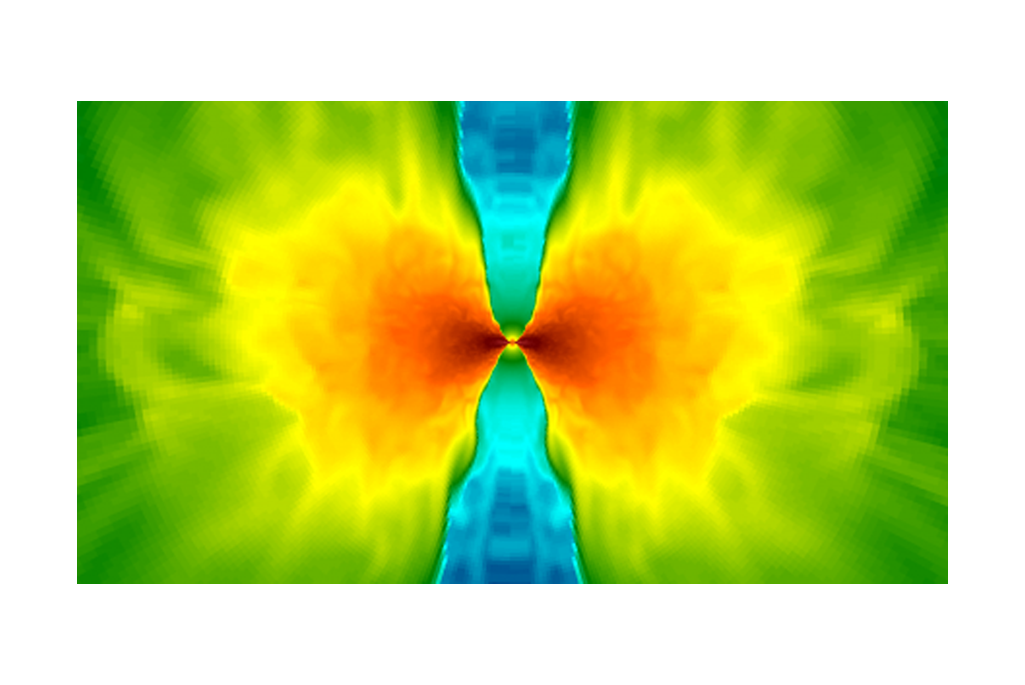Rodrigo Fernández, Alexander Tchekhovskoy, Eliot Quataert, Francois Foucart, Daniel Kasen, Long-term GRMHD Simulations of Neutron Star Merger Accretion Disks: Implications for Electromagnetic Counterparts, Mon.Not.Roy.Astron.Soc. 482 (2019) 3373–3393
The aftermath of the collision of two neutron stars has been fully captured in a 3D computer model for the first time. The achievement has led to a better understanding of the cosmic collision, showing how heavy elements like lead and gold are created and accounting for a phenomenon missing in other models. Neutron stars are the smallest and densest stars, mostly made of elementary particles called neutrons. In August 2017, scientists detected the collision of two neutron stars for the first time by using the Laser Interferometer Gravitational-Wave Observatory. When two of these stars collide, they merge in a flash of light and debris known as a kilonova, as material explodes outward. One of the important elements of studying the collision is the accretion disk—a collection of leftover debris that orbits the combined hyper-massive star—a cosmic footprint of the collision event. The material launched by the accretion disk should match up with the amount of matter that plays a part in the kilonova, helping scientists better understand the event. By modeling the aftermath of the collision in such detail, they have been able to account for both the accretion disk and another way matter is ejected from the collision: carried by an astrophysical jet, a narrow plume of particles and radiation shot out at nearly the speed of light as the stars collide, which is also thought to be the source of the gamma ray burst.
See also: DOE Highlight
